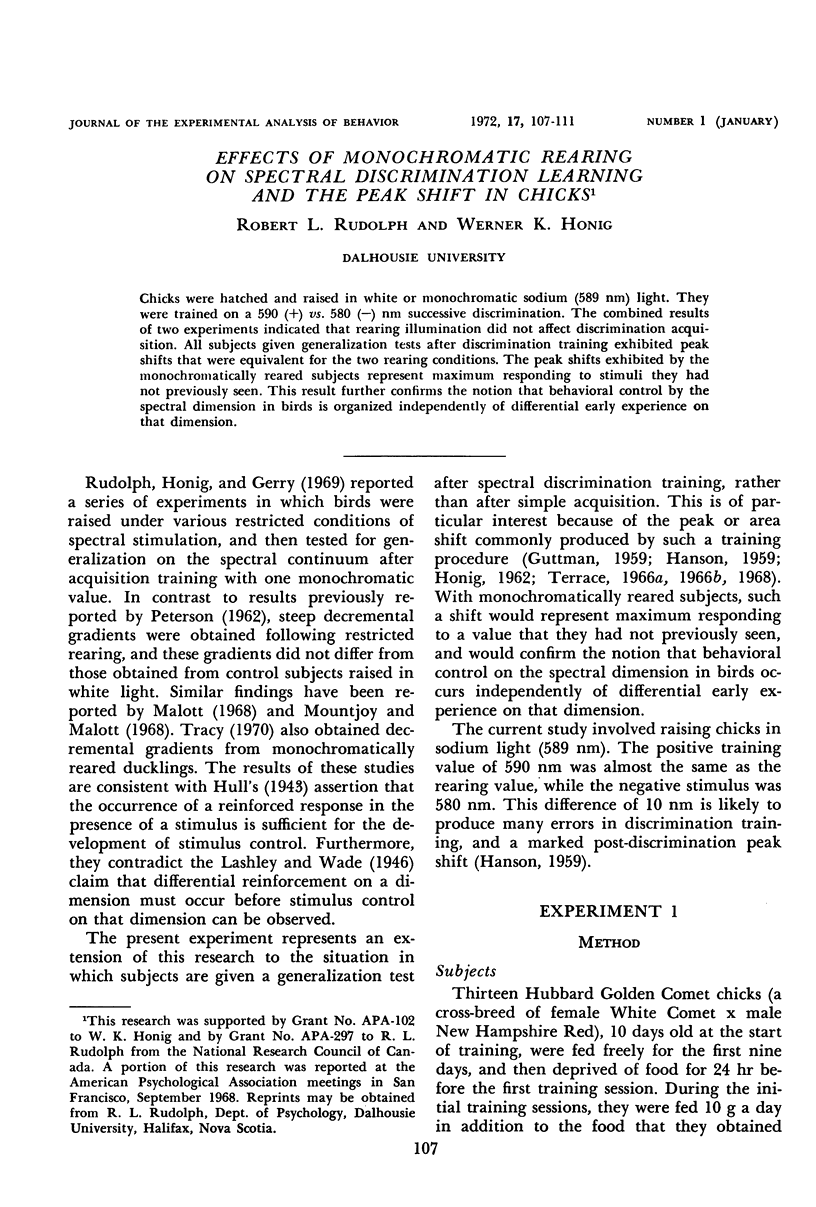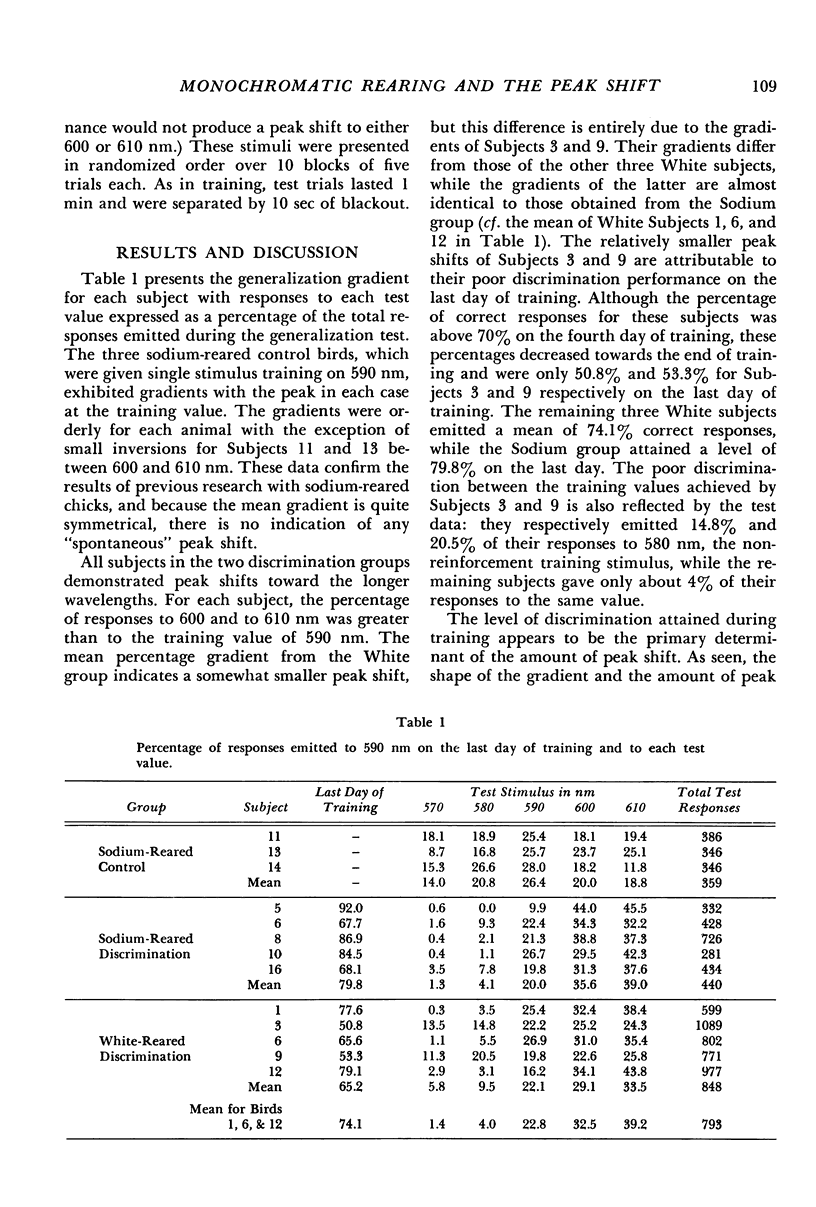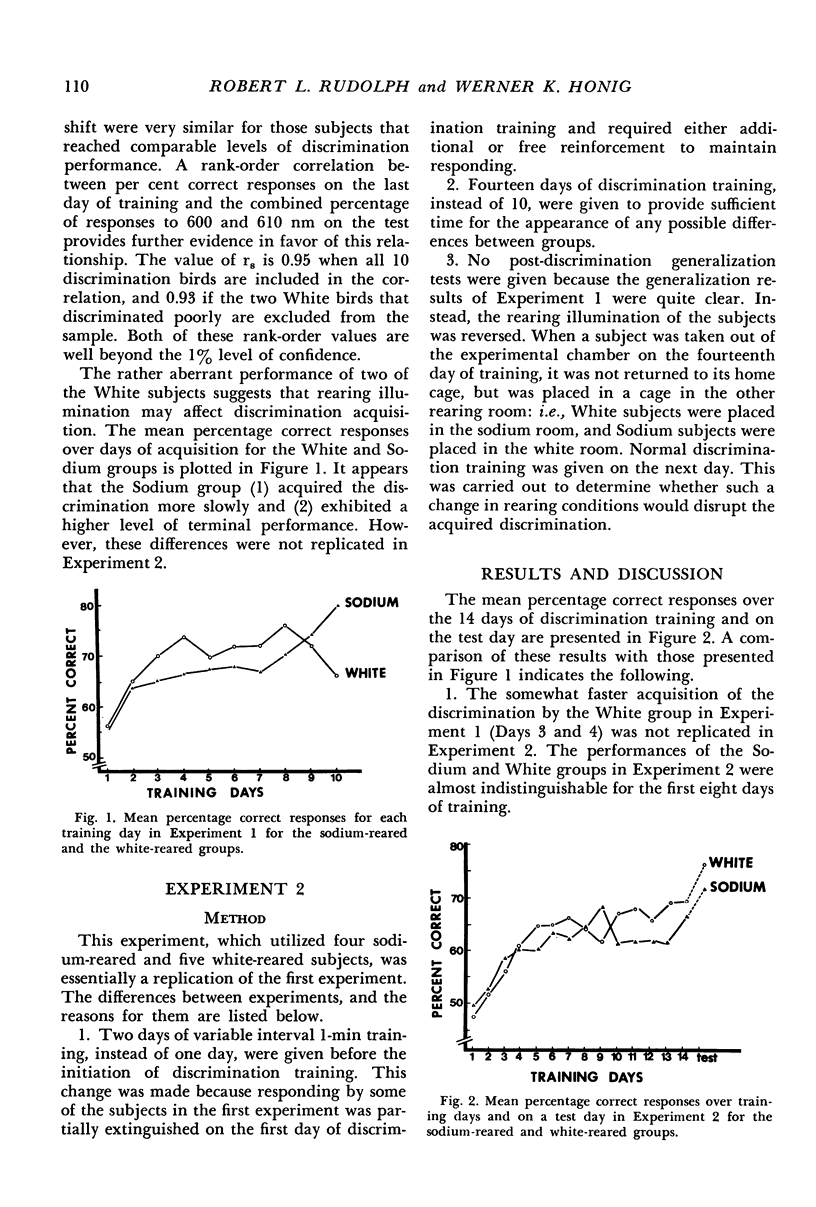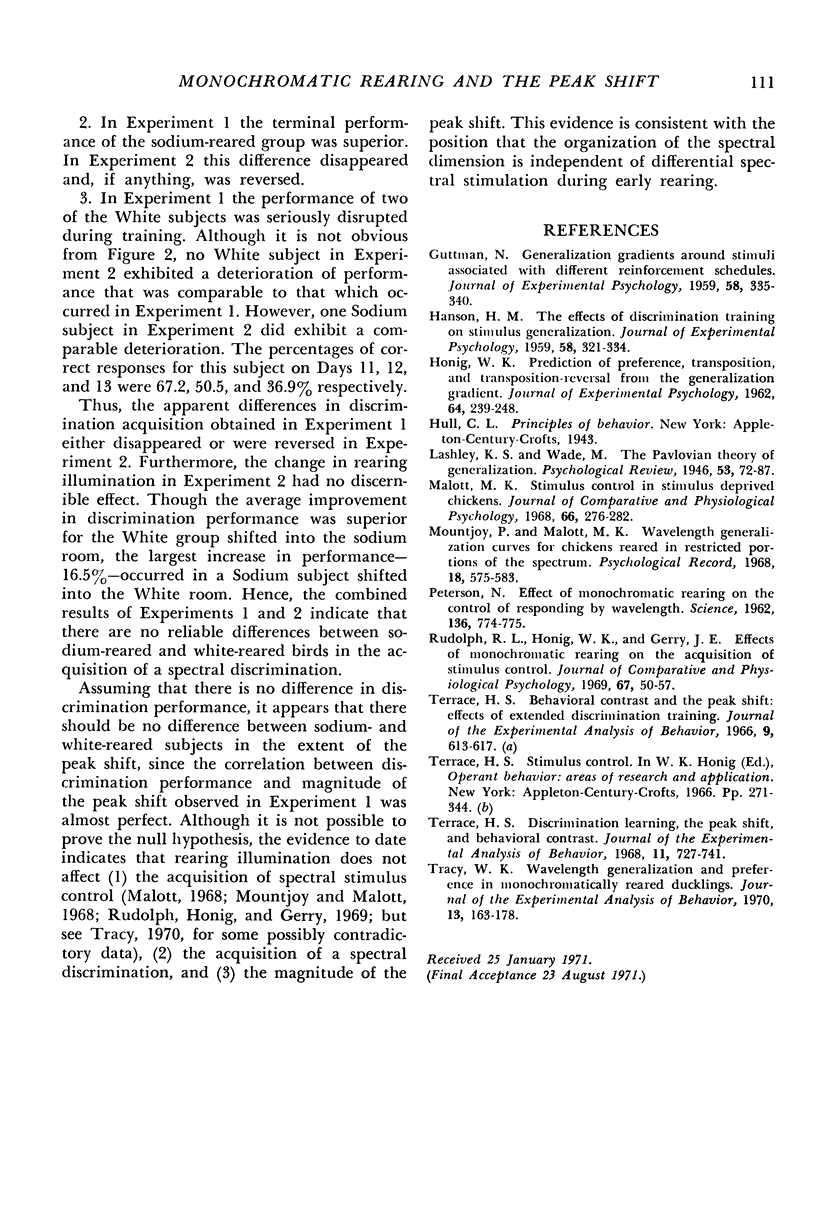Abstract
Chicks were hatched and raised in white or monochromatic sodium (589 nm) light. They were trained on a 590 (+) vs. 580 (−) nm successive discrimination. The combined results of two experiments indicated that rearing illumination did not affect discrimination acquisition. All subjects given generalization tests after discrimination training exhibited peak shifts that were equivalent for the two rearing conditions. The peak shifts exhibited by the monochromatically reared subjects represent maximum responding to stimuli they had not previously seen. This result further confirms the notion that behavioral control by the spectral dimension in birds is organized independently of differential early experience on that dimension.
Full text
PDF




Selected References
These references are in PubMed. This may not be the complete list of references from this article.
- HANSON H. M. Effects of discrimination training on stimulus generalization. J Exp Psychol. 1959 Nov;58:321–334. doi: 10.1037/h0042606. [DOI] [PubMed] [Google Scholar]
- HONIG W. K. Prediction of preference, transposition, and transposition-reversal from the generalization gradient. J Exp Psychol. 1962 Sep;64:239–248. doi: 10.1037/h0048290. [DOI] [PubMed] [Google Scholar]
- Malott M. K. Stimulus control in stimulus-deprived chickens. J Comp Physiol Psychol. 1968 Oct;66(2):276–282. doi: 10.1037/h0026347. [DOI] [PubMed] [Google Scholar]
- PETERSON N. Effect of monochromatic rearing on the control of responding by wavelength. Science. 1962 Jun 1;136(3518):774–775. doi: 10.1126/science.136.3518.774. [DOI] [PubMed] [Google Scholar]
- Rudolph R. L., Honig W. K., Gerry J. E. Effects of monochromatic rearing on the acquisition of stimulus control. J Comp Physiol Psychol. 1969 Jan;67(1):50–57. doi: 10.1037/h0026658. [DOI] [PubMed] [Google Scholar]
- Terrace H. S. Behavioral contrast and the peak shift: effects of extended discrimination training. J Exp Anal Behav. 1966 Nov;9(6):613–617. doi: 10.1901/jeab.1966.9-613. [DOI] [PMC free article] [PubMed] [Google Scholar]
- Terrace H. S. Discrimination learning, the peak shift, and behavioral contrast. J Exp Anal Behav. 1968 Nov;11(6):727–741. doi: 10.1901/jeab.1968.11-727. [DOI] [PMC free article] [PubMed] [Google Scholar]
- Tracy W. K. Wavelength generalization and preference in monochromatically reared ducklings. J Exp Anal Behav. 1970 Mar;13(2):163–178. doi: 10.1901/jeab.1970.13-163. [DOI] [PMC free article] [PubMed] [Google Scholar]


